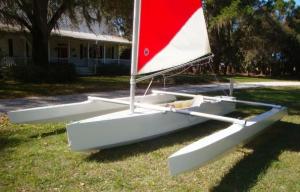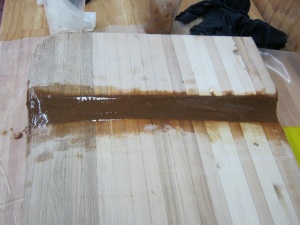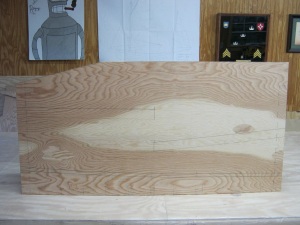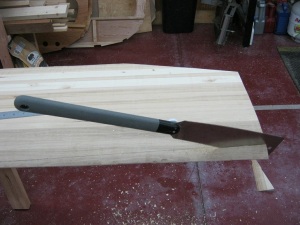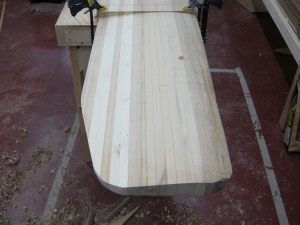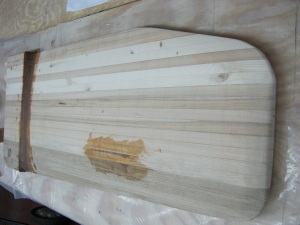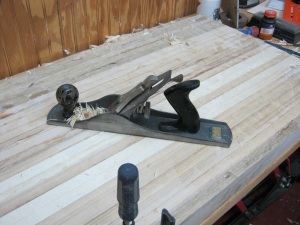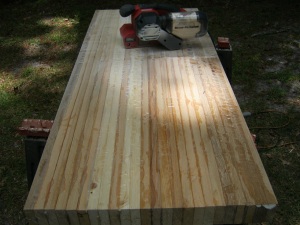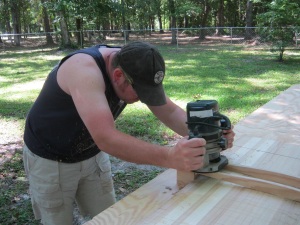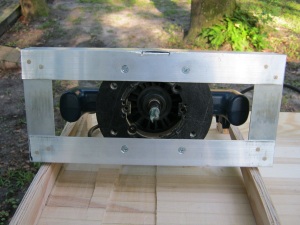Any project no matter how large or small can be broken down into different phases. If you build a house, the phases are foundation, framing, rough in, dry in, and trim out. Inspecting an aircraft calls for teardown, inspection, re-assembly, and operational tests. As l look at my build of Idle Hands I can see seven distinct phases:
1. Planning
2. Component Construction
3. Framing
4. Planking
5. Decking
6. Trim out
7. Sail the boat!
The first phase for me was a bunch of head scratching, beer drinking, internet surfing, and trying to sell the idea to my lovely wife. This I think is one of the most fun portions of any big project. As you surf the web and look through the appropriate magazine you have to ask yourself “can I do this?”, “does this match my intended use?”, and most importantly “what will the wife think?”. Being a male of the species, I am adept at convincing myself that I can, will, and should tackle any project I am fancying at the time. Whether it’s restoring a classic car, building an airplane, turning a box of random parts into a 1970 Honda CB750 motorcycle, I have no shortage of optimism that the project will be complete, on time, and on budget. In fact the more thought put into it the more I am convinced that not only can I take on the challenge but it would be silly for me not to. The female of the species is a little tougher to convince.
Cheryl is probably the best wife a man could ever have; we have been a two man crew for as long as we have been together. We have been through tough times and good times and she has never once complained about my wild ideas. I think I could walk in and tell her I bought an airplane in pieces and she would be good with it. That level of trust means I have to make sure I have her buy-in before I start spending money. Selling her the sailboat was a tough one though because my bride likes to go fast. She thinks fast, talks fast, walks fast, and runs fast; 13.1 miles in one hour and fifty-eight minutes fast. She will not own a motorcycle that will do 0-60 in more than 4 seconds or a car that takes longer than 7 seconds. That kind of fast doesn’t mesh well with a sailboat. Last year, in an effort to sway her my way, we went to the Jacksonville boat show to look at some trailer sailors. We had beautiful weather for the boat show and oyster jam and made out way through all of the trailored boats all the while I was talking her up on the merits of a trailorable sailboat. As we reached the marina side she saw the docked boats and asked if we could go look at them too. This is my suggestion to anyone trying to sell a small sailboat – do not show your wife a 35-foot Catalina unless you plan on buying a 40-foot Catalina. After touring through several brand new keel boats, that cute Compac looked like a bathtub with a sail. It took a while to recoupe from that mistake.
I finally set the hook when I came across the plans for Frank Smoots Slingshot 19. The Slingshot has a lot going for it; it’s fast, shallow draft, inexpensive construction, and fast, did I mention that? Basically it was a big sail powered version of the kayaks that we paddle all around this area. I ordered the plans from Duckworks and began bulding the workbenches. When the plans arrived I used some scrap wood to draw out the frames so I could make a mockup of the Slingshot so I could see what we were getting into. After mocking up the boat and taking a good hard look at it Cheryl and I both realized that it just wasn’t the boat we needed. No matter how cool it was or how much I wanted to build it the fact was we needed a little more room to move around and store stuff.
Knocking the Slingshot off the list brought the second place boat up to the front. The Pathfinder was larger, more complicated, and more expensive. The only question Cheryl had is “can you do it?” On to phase 2.
